When one thinks of Greek islands, the mind often drifts to the iconic Santorini sunsets or the lively streets of Mykonos. However, beyond the well-trodden paths lie hidden treasures waiting to be discovered.
Greece’s smaller islands are amazing getaways for those looking to slow down and enjoy the simpler things, along with the sun and the sea. Here, less tourism means more genuine encounters and locals eager to share their slice of paradise with curious visitors.
In this article, we embark on a journey to unveil 10 lesser-known Greek islands that offer an authentic glimpse into the country’s rich history, stunning landscapes, and vibrant culture. From secluded beaches to quaint fishing villages, these islands promise an escape from the tourist crowds and an opportunity to immerse oneself in the true essence of Greek island life.
Join us as we venture off the beaten track and explore these hidden gems that are sure to captivate and enchant any traveler seeking an unforgettable Greek island experience.
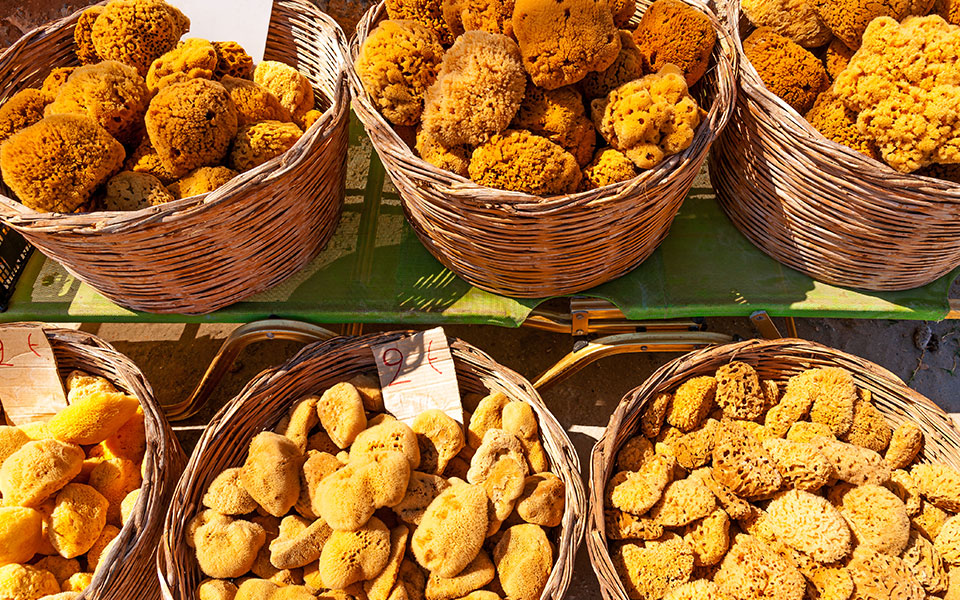
© Shutterstock
1. Pserimos
Nestled amid the Dodecanese archipelago, just off the coast of Turkey, the tiny island of Pserimos is like a distillation of the quintessential Greek island experience. With its diminutive size and sparse population – 80 inhabitants, according to the 2011 census – the island is perfect for those seeking solitude and relaxation.
Lying between the more popular islands of Kalymnos and Kos, Pserimos’ main draw is its beautiful, secluded beaches. Vathis, Panaghia Grafiotissa and Marathontas have sand and fine shingle, lapped by turquoise waters. These will take around half an hour to reach on foot from Avlaki, the island’s only village, climbing up and down moderate hills. Another 15 minutes will get you to Tafos Beach, but make sure you have the right shoes, because you’ll be walking over craggy terrain, with just the goats for company.
Avlaki, which doubles up as the island’s port, offers rooms to rent, a few shops, several all-day tavernas serving delicious, locally sourced cuisine, and a long stretch of sandy beach. Be warned: in August, Avlaki can get quite crowded with day-trippers arriving from Kos.
Tip: Don’t leave without trying the deliciously salty capers, served in many of the local salads. The island’s cliffs are covered in wild caper bushes. It’s no coincidence that Pserimos is often called “Kappari” (Greek for “caper”).
For more on Pserimos, click here.
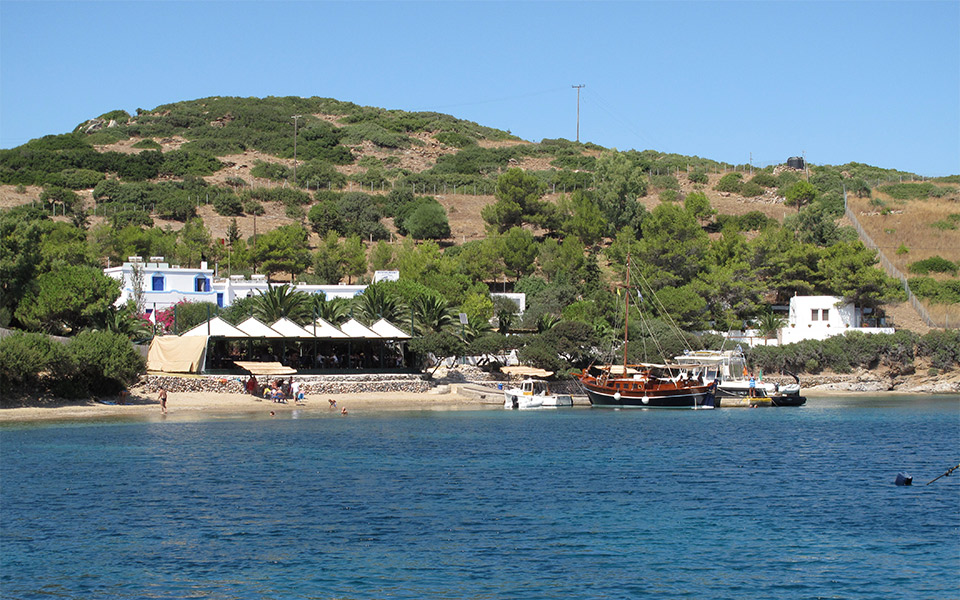
© Shutterstock
2. Marathi
Staying in the Dodecanese, we venture north to the even smaller island of Marathi, located between the holy isle of Patmos and the city of Bodrum, on the west coast of Turkey. Marathi is a destination for those who, rather than exploring new places every day, prefer to enjoy the tranquility of a sandy beach in a sheltered bay, and indulge in a good book.
If you thought Pserimos had a tiny population, Marathi, according to the 2011 census, only has five permanent residents, being Greece’s “least inhabited island.” If your dream is to play Robinson Crusoe for the summer, Marathi is the ideal place. Thanks to its location, it has become a popular stopover for the sailing crowd, exploring the islands and coastlines of the eastern Aegean
Part of a complex of islets called the Arkioi islands, Marathi is inscribed on the Natura 2000 network and is an important refuge for local wildlife. Car free, the island’s only village offers a small number of rooms to let, two jetties, one tiny church (Agios Panteleimon), and a couple of tavernas in which to try delicious seafood.
Without any light pollution, Marathi is renowned for its spectacular sun sets. The so-called “red moons” (full moons) are epic. You think you can touch them.
Tip: Indulge in the local seafood. The baked bream prepared by Katina at Pantelis Taverna is in itself a reason to visit Marathi, as well as her lobster pasta (a secret recipe!).
Click here for our guide to Marathi.
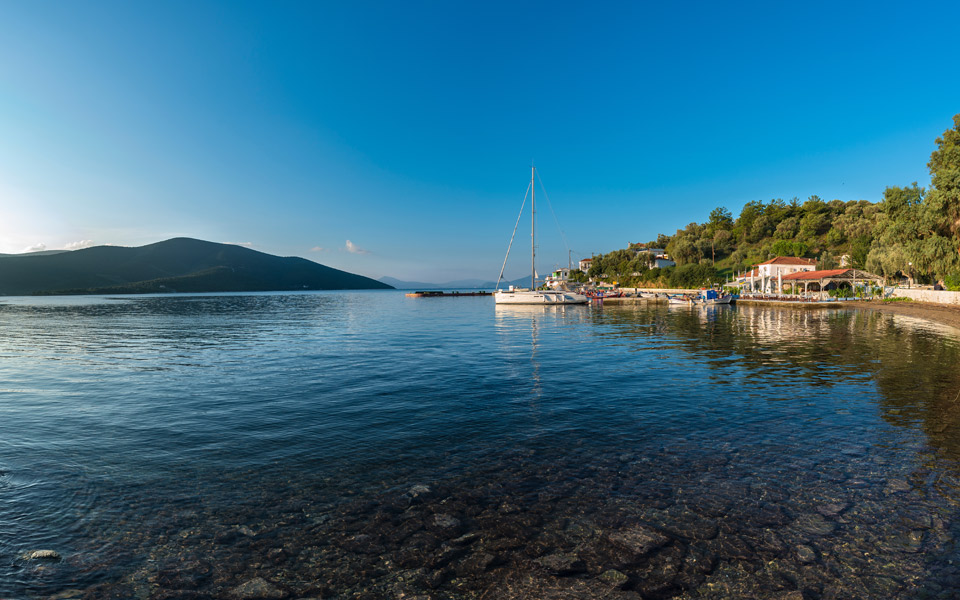
© Shutterstock
3. Paleo Trikeri
Traveling to the other side of the Aegean, to the Pagasitic Gulf off the Pelion Peninsula of mainland Greece, the island of Paleo Trikeri is a true piece of secluded paradise.
Like Marathi, vehicles are forbidden; visitors must leave their cars at Alogoporos, the nearest point on the mainland, and from there make the 5-minute crossing by water-taxi.
After disembarking at the port’s small settlement, visitors can explore a network of paths that lead to small bays. What’s striking about this tiny island is that it resembles a floating olive grove. There are between 60,000 and 70,000 olive trees covering a 2.5-square-kilometer piece of land, set against the backdrop of the azure blue sea.
All in all, there are around 40 houses inhabited by locals, a limited number of rentals, and two tavernas, serving fresh seafood (try the steamed limpets). There are no supermarkets, or bars, or cafés. The year-round population is estimated to be 15.
The main cultural attraction is the impressive Convent of Panagia Evangelistria, in the heart of the island, built sometime around the start of the War of Greek Independence (1821). It comprises approximately 100 cells, a few of which are functional and offered for accommodation at an extremely low price. There are no more nuns left at the convent; only one woman works as a caretaker. From 1949 to 1952, during the Greek Civil War, the cells housed the guards of the women who were exiled to the island – it is estimated that about 5,000 women detainees passed through Trikeri during this period. They lived in tents barely big enough to sleep in.
Tip: Explore the island’s secluded beaches. The most beautiful are Afetka, Agia Sophia and Prasini Ammos, all within walking distance and with crystal clear waters.
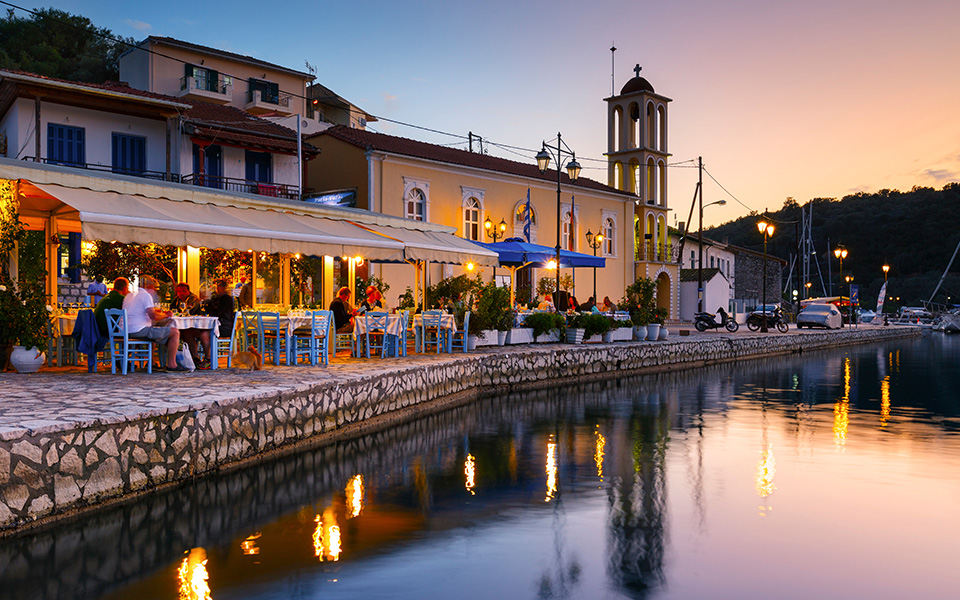
© Shutterstock
4. Meganisi
Heading over to the western side of Greece, to the picturesque Ionian islands, Meganisi (literally “big island”) sits immediately to the southeast of Lefkada. Despite its diminutive size, Meganisi boasts a fairly large permanent population – 1,041 according to the 2011 census – and is home to three villages: the centrally located settlement of Katomeri, and the port villages of Vathy and Spartochori. The nearby private island of Skorpios was famously bought by the late Greek shipping magnet, Aristotle Onassis, in 1963.
The island offers plenty of beaches, with incredible views of the surrounding islands. It is also home to a number of sea caves, the most famous being Papanikoli Cave, situated on the west coast. This enormous cave – the second largest in Greece – was used as a lair for the Greek submarine Papanikolis (Y-2) during World War II. This particular submarine took part in the legendary British-Greek commando raid on Rhodes in 1942, codenamed “Operation Anglo.” (The submarine’s conning tower is currently on display outside the Hellenic Museum in Piraeus.)
Meganisi is easily reached by ferry from nearby Nydri, on Lefkada. There are also regular connections with Ithaki (Ithaca) and Kefalonia. With few cars on the island, the prevailing atmosphere is one of peace and quiet.
Tip: Aside from the Papanikoli sea cave, head to the old olive-press of Panoutsos at Vathy, which has been converted by the local municipality into an industrial museum.
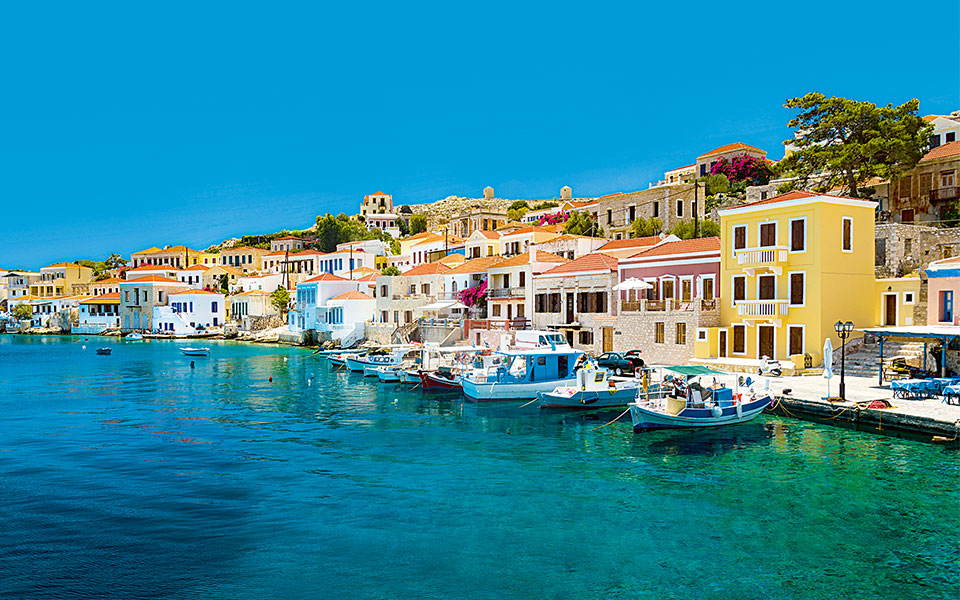
© Shutterstock
5. Halki
Returning to the Dodecanese, the small island of Halki is worlds apart from its larger, more cosmopolitan neighbor of Rhodes.
Until the mid-20th century, Halki was home to thousands, and its main trade was sponge-diving. Today, only around 500 live in the island’s only settlement, Emporios, its port lined by brightly colored 19th-century houses and mansions, many lovingly restored.
Life is deliciously laidback here. Even the clock in the clock tower of the Church of Agios Nikolaos, overlooking the harbor, stands still at twenty after four. This was deliberate. Following extensive restoration works, it was found that its jarring chimes were too noisy!
Only a handful of cars circulate on the streets of Emporios during the day and there’s a complete ban from 6pm onwards in the village center, but you can get around the island by bus, boat or on foot. It’s an 8-minute walk west to the white-sand beach of Pontamos and 50 minutes to Areta, which consists of large white pebbles. Ftenagia, another pebble beach, is 10 minutes due south, and Kania, with a blend of coarse sand and fine pebbles, is 40 minutes due north. You can get to Tracheia in the south by boat; there are two quiet pebble beaches that face each other on the narrow neck of a small peninsula.
Tip: Head southwest to the 19th-century Monastery of Ai-Yiannis Alarga, which has a pretty café where the monks serve souma, a traditional spirit, and local cheese with honey.
Check out our guide to Halki here.
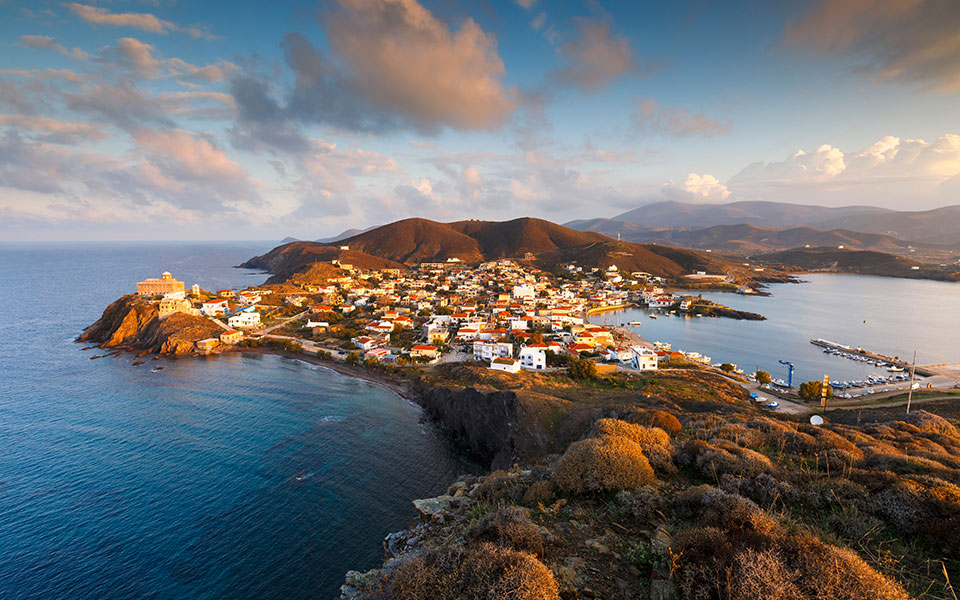
© Shutterstock
6. Psara
Heading to the North Aegean now, to Psara, the heroic little island whose inhabitants were brutally massacred by Ottoman troops in 1824, at the height of the Greek War of Independence.
Psara literally means “fisherman,” and fishing remains its biggest industry, so ordering fish and seafood at the tavernas is a must while you’re here. The island is particularly famous for its lobsters.
Located west of Chios, Psara is home to approximately 450 people. Its only settlement, also named Psara, is on the western side of the island, and carries all the traditional traits of a small Aegean island; narrow cobblestone streets lined with traditional stone houses surround the harbor.
While you’re here, also visit the house of Kostantinos Kanaris, a great hero of the war of 1821, and the memorial site at Mavri Rahi, on the Paleokastro peninsula on the western side of the harbor – the spot where Psariot warriors sacrificed themselves and took their own lives, refusing capture by the Ottomans in 1824.
Psara is easily reached by ferry from nearby Chios. The island counts 20 sandy beaches and 18 pebbled beaches, so visitors are spoiled for choice. Many agree that the most spectacular beaches can be found on the east coast, with their wild black rocks and deep emerald waters.
Tip: Psara is one of Greece’s biggest lobster producers. Don’t leave before trying some of the island’s world famous lobster pasta!
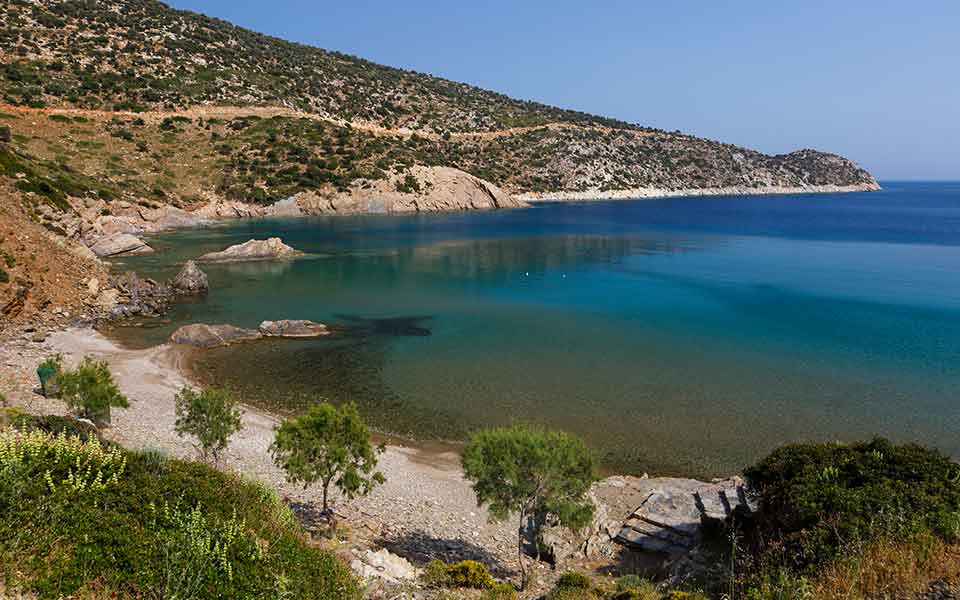
© Shutterstock
7. Fourni
Fourni is the name of a tiny archipelago situated between Samos and Ikaria, as well as the name of the main island. The capital, located on the western side of the main island, is the settlement of Kambos. You can also visit Kambi, about a kilometer away from Kambos, and the fishing village Chrisomilia on the north side of the island (get here by boat).
Several archeological sites, such as the ancient Petrokopeio (quarry), prove that Fourni was inhabited in ancient times. There are no standing structures, but the ruins of buildings are scattered across the landscape. The sites are not mind-blowing, but the surroundings make your outings worth it.
Hiking is a good activity to focus on, as is snorkeling at the many pretty beaches. At Kamari Beach, you can spot the remains of ancient houses on the seabed, while the many shipwrecks around the island make for interesting scuba diving excursions.
Take a boat from the Fourni harbor to nearby Thymaina island, for a swim at the gorgeous Keramidou Beach and a visit to the chapel of Aghios Dimitrios, from where you can enjoy panoramic views of the Fournoi islands.
Tip: For a relaxing swim, head to Vlychada Beach, the southernmost beach of Fourni. Nestled in a narrow bay, Vlychada remains secluded due to its difficult access. Remember to bring all the essentials with you.
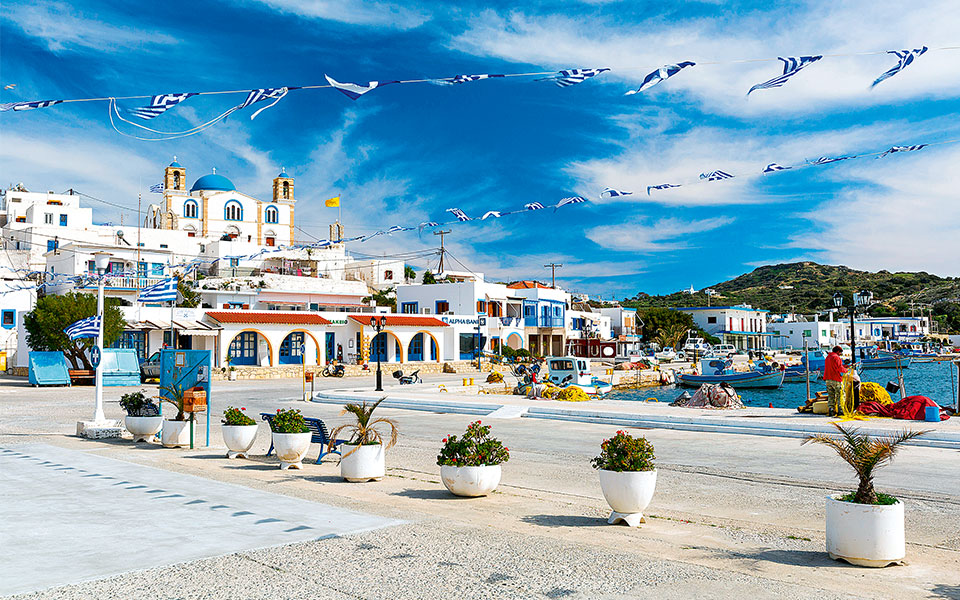
© Shutterstock
8. Lipsi
Located between the islands of Patmos and Leros, this Dodecanese island may be tiny, but connections are very good, as it’s a natural stop for the ferries connecting the larger islands. It is surrounded by over twenty, even smaller, islets, creating a small archipelago of the same name as the main island. It’s a paradise for swimming and snorkeling lovers with countless coves and sandy beaches to discover. They’re best reached by boat.
The islets provide refuge for seals and turtles, and it’s not uncommon to spot dolphins here as well. While there are hiking routes on the island, you won’t want to go far from the sea. On the western side of the island, under the Monastery of the Dormition of the Virgin Mary (“Koimisi tis Theotokou”), lies the namesake beach that is hidden from the world. The beach is small and quiet, there is no shade, it has turquoise waters and pebbles. Make sure you have everything you need and go early in the morning or late in the afternoon to avoid the heat.
When you return from your swimming excursions in the evening, excellent sea food is served at the tavernas in the harbor. Take a seat at one of the tables that are set out in front of the esplanade and, with a glass of chilled ouzo, enjoy grilled octopus, fried zucchini balls, homemade eggplant salad, and a seafood dish with orzo.
Tip: Try the popular local sweet red wine made from Fokiano, a rare grape variety brought to Greece from Asia Minor in antiquity.
Click here for our guide to Lispi.
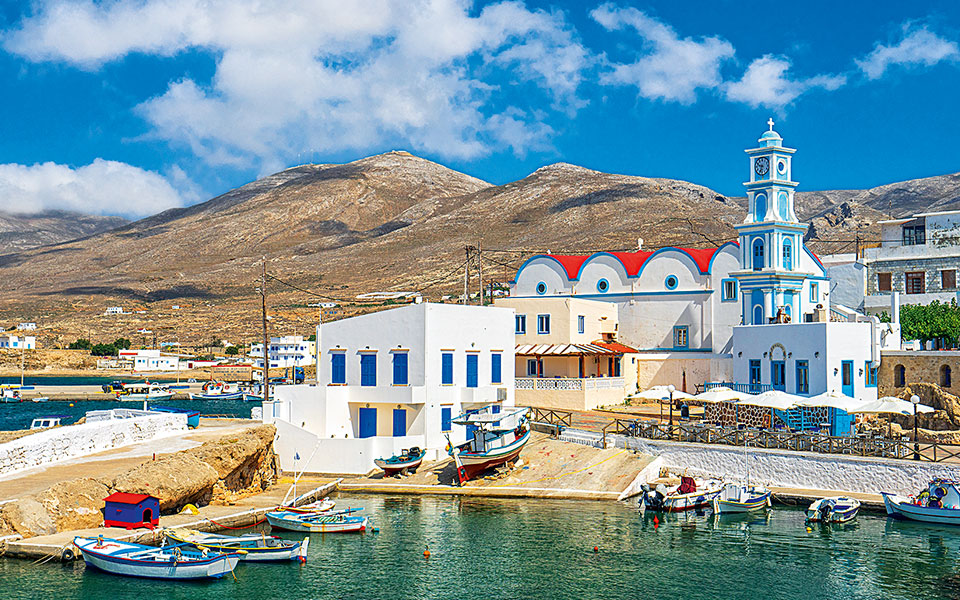
© Perikles Merakos
9. Kasos
The southernmost island in the Dodecanese, lying just east of Crete, Kasos has an area of just 49 square kilometers, and a population of just over a thousand. At first glance, the island’s rugged landscape makes it appear forbidding and hostile, but the warmth of its inhabitants make it hugely rewarding for those who make the effort to visit.
The island is quite mountainous (the highest point is Mount Prionas, 550m above sea level), so hiking means amazing views. There are five villages to check out: Fri (the capital, pronounced ‘free’), Agia Marina, Poli, Panagia, and Arvanitochori.
The beaches on Kasos are wild and beautiful. Passing Fri and Bouka as you head west, you will come across a small church dedicated to Agios Konstantinos that marks the turnoff to Ammouas Beach. If you keep going for about 5k further along the road, you will reach Antiperatos Beach, which consists of three small coves with excellent blue-green waters that can get a bit choppy in northerly winds. The beach at Helathros is also worth a visit, made up of massive rocks embracing a pretty bay with clear waters.
Another great reason to visit Kasos is the amazing food. Influences from all around the Mediterranean have shaped its cuisine for hundreds of years, resulting in some characteristic and delicious dishes that are commonly copied around Greece, but never taste as good as here. Tiny vine leaf rolls with minced meat and rice are among the most popular. Roikio is a wild green that’s preserved in brine, so that it may be enjoyed all year round. When stewed with tomato it is referred to as “Roikio Giachni.”
Tip: Also try the handmade “makarounes” pasta with the characteristic Kasian cheese sitaka, and fakorizo: lentils with rice.
For more on Kasos, click here.
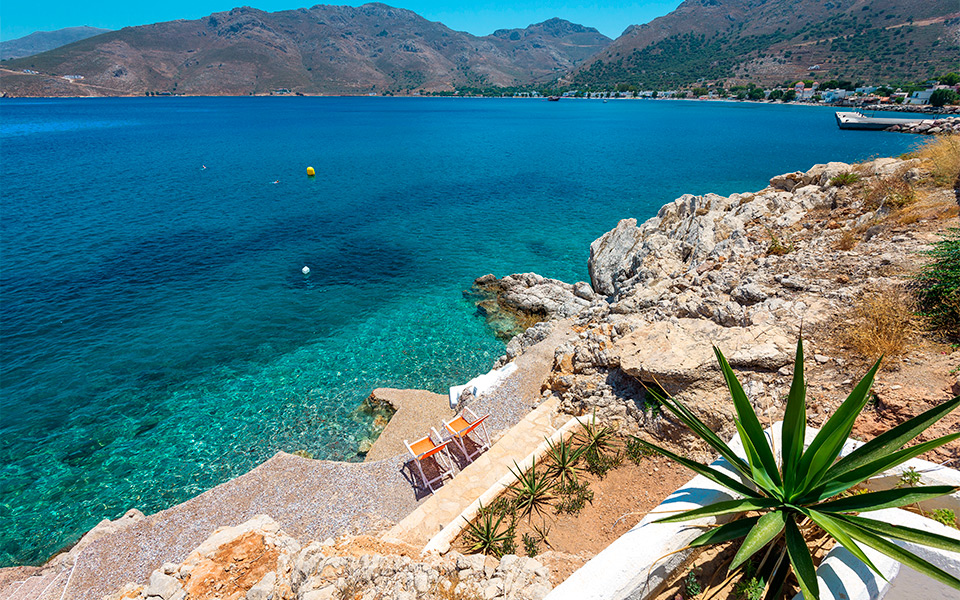
© Shutterstock
10. Tilos
Tilos is a small island between Kos and Rhodes in the Dodecanese, with a population of about 500 permanent residents. According to mythology, it got its name from Tilos, the son of Alia, sister of Helios. The myth says that when Alia fell ill, Tilos came to this island to gather herbs to cure her. Once she recovered, he built a temple here in honor of the god Apollo.
The capital of Tilos is Megalo Horio, the port is called Livadia, and there are two other settlements: Eristos and Agios Antonios. There are many spots of archaeological and religious interest, including the 14th-century Monastery of Agios Panteleimonas, built on a desolate slope of Kriallos Hill in the northwestern part of the island. Standing at an elevation of 270m, it offers views to Nisyros and Kos. As the sun sets, the mist that forms around Nisyros in the distance makes it seem as if that island is floating on air.
Tilos boasts many pristine beaches that can only be accessed on foot. Wear a hat and comfortable shoes, and bring water, too, as you explore swimming spots like Lethra, Limenari and Aghios Petros – all pebble beaches.
If you’re a fan of hiking, Tilos is the ideal destination. The island boasts an impressive 54km-long network of signposted footpaths.
In a cave on Tilos the remains of Europe’s last known population of dwarf elephants were found: bones belonging to about 40 individuals that died around 4,000 years ago. They are estimated to have stood only 1.20m – 1.50m tall. It is worth visiting the Dwarf Elephant Museum in Megalo Horio where you will soon be able to see a 3D model of the animal that was created by the University of Athens.
Tip: Ask the locals to direct you to the sea cave in the area of Loumboudi in Livadia, accessible only by boat or canoe. In the interior there is a small hidden beach with fine pebbles, where if you are lucky, you may even see seals.
For more on the remarkable island of Tilos, click here.












